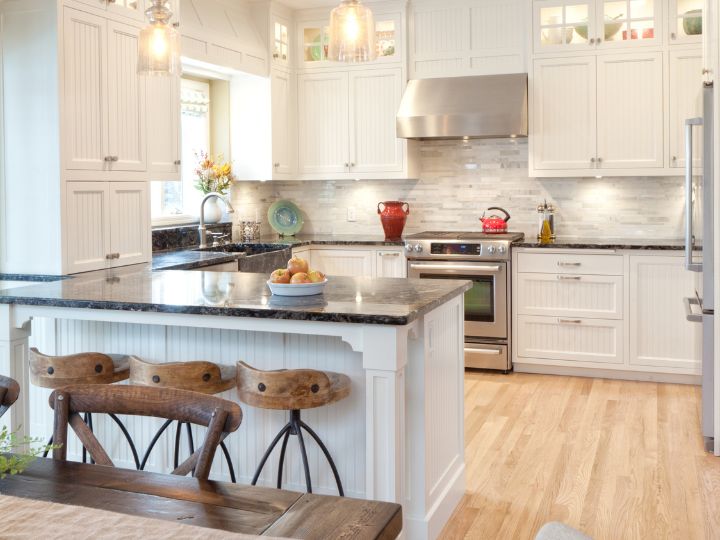
How to Make Your New Addition Fit Seamlessly with Your Home

Creating a home addition that looks like it was always part of the original structure requires careful planning and attention to detail. This comprehensive guide will help you navigate the complex process of designing and building an addition that integrates seamlessly with your existing home.
Understanding the Challenges
A successful addition must address multiple integration points:
- Architectural harmony
- Material matching
- Structural integrity
- Design continuity
- Systems coordination
Architectural Elements: The Foundation of Seamless Integration
Roofline Integration
The roof is often the most visible aspect of an addition. Key considerations include:
Pitch Matching
- Measure existing roof pitch precisely
- Consider seasonal drainage needs
- Account for snow load in applicable regions
- Plan for proper ventilation
- Ensure structural support
Eave and Fascia Details
- Match existing overhang dimensions
- Replicate fascia board profiles
- Coordinate soffit ventilation
- Align gutter systems
- Mirror trim details
Transition Techniques
- Valley integration methods
- Ridge line continuation
- Cricket design where needed
- Flashing details
- Weatherproofing transitions
Exterior Feature Coordination
Siding and Material Integration
- Weather aging patterns
- Texture matching
- Color blending strategies
- Pattern alignment
- Material transitions
Cost Considerations:
- Standard match: $8-12 per square foot
- Custom matching: $15-25 per square foot
- Specialty materials: $30+ per square foot
Foundation Elements
Height Matching Requirements
- Survey existing foundation
- Account for settling
- Plan grade transitions
- Consider drainage patterns
- Match material profiles
Material Matching Strategies
Exterior Materials
Siding Coordination
- Source matching materials
- Plan for weathering
- Consider exposure ratings
- Match installation patterns
- Account for expansion
Brick and Stone Matching
- Color blending techniques
- Mortar matching
- Pattern replication
- Aging considerations
- Texture coordination
Windows and Doors
Style Integration
- Match frame materials
- Replicate muntin patterns
- Coordinate hardware finishes
- Maintain proportions
- Consider energy efficiency
Typical Costs:
- Standard windows: $300-600 each
- Custom matches: $800-1,500 each
- Historic replications: $1,500-3,000 each
Trim and Architectural Details
Profile Matching
- Document existing profiles
- Create custom knives if needed
- Match material species
- Consider maintenance requirements
- Plan for weather exposure
Interior Integration Techniques
Floor Level Coordination
Height Matching
- Survey existing floors
- Plan transitions
- Account for subfloor thickness
- Consider ceiling heights
- Coordinate threshold details
Material Integration
- Match wood species
- Coordinate grain patterns
- Plan for wear patterns
- Consider future refinishing
- Account for expansion
Wall Integration
Opening Design
- Plan traffic flow
- Consider sight lines
- Match trim profiles
- Coordinate ceiling heights
- Plan electrical layout
Systems Integration
HVAC Considerations
- Load calculations
- Duct design
- Zone planning
- Temperature control
- Ventilation requirements
Electrical Planning
- Circuit capacity
- Fixture matching
- Switch placement
- Outlet coordination
- Lighting design
Design Considerations for Seamless Flow
Space Planning
Traffic Pattern Integration
- Natural movement flows
- Door swing coordination
- Furniture placement
- Activity zones
- Emergency egress
Visual Continuity
- Sight line planning
- Light flow considerations
- Color coordination
- Texture matching
- Pattern continuation
Style Continuation
Period-Specific Elements
- Architectural details
- Material selections
- Hardware choices
- Finish specifications
- Decorative elements
Project Planning and Execution
Pre-Construction Phase
Documentation Requirements
- Existing conditions survey
- Detailed measurements
- Material documentation
- Photo documentation
- Style inventory
Design Development
- Preliminary sketches
- Material selections
- Construction documents
- Detail drawings
- Specifications
Construction Phase
Timeline Planning
- Material procurement: 4-8 weeks
- Foundation work: 1-2 weeks
- Framing: 2-3 weeks
- Exterior finishing: 2-4 weeks
- Interior finishing: 3-6 weeks
Quality Control Measures
- Regular inspections
- Material verification
- Installation monitoring
- Detail checking
- Systems testing
Common Integration Challenges
Material Matching Issues
Weather-Related Challenges
- UV exposure differences
- Moisture patterns
- Temperature cycling
- Weathering rates
- Seasonal impacts
Age-Related Considerations
- Material patina
- Wear patterns
- Color fading
- Texture changes
- Settlement issues
Structural Considerations
Load Distribution
- Foundation requirements
- Support systems
- Load paths
- Settlement potential
- Seismic considerations
Code Compliance
Current Requirements
- Energy codes
- Safety standards
- Ventilation requirements
- Egress rules
- Structural codes
Budget Planning
Cost Considerations
Material Factors
- Standard matches: 100% of base cost
- Custom matches: 150-200% of base cost
- Historic replications: 200-300% of base cost
Labor Considerations
- Skilled craftsman premiums
- Custom work requirements
- Detail installation time
- Transition complexity
- System integration
Project Success Checklist
Pre-Project Planning
- Document existing conditions
- Research original materials
- Consult professionals
- Develop detailed plans
- Create material specifications
During Construction
- Regular progress monitoring
- Material verification
- Detail inspection
- System testing
- Integration checking
Conclusion
Creating a seamless addition requires:
- Thorough planning
- Attention to detail
- Quality materials
- Skilled craftsmanship
- Professional home remodelers in Grand Rapids guidance
Next Steps
- Document existing home details
- Consult with professionals
- Develop preliminary plans
- Research materials
- Create project timeline
- Establish budget parameters
Remember that successful integration comes from careful planning, quality materials, and skilled execution. The extra time spent in planning and detail work will result in an addition that truly looks like it was always part of your home.
Latest Blogs
DON'T JUST DREAM ABOUT IT, MAKE IT YOUR REALITY.
Book a free 15-minute call to discuss your vision and needs. Let’s bring your dream space to life!

.svg)
.svg)


